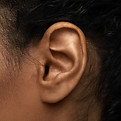Speech and Language Therapy
Bluestone's highly qualified and trained speech language pathologists are licensed through the state of Michigan and registered through the American Speech Language Hearing Association (ASHA).
The Bluestone Speech and Language Department evaluates and treats the BIG 9 diagnoses. Check out the below areas of treatment within the scope of speech language pathology that our staff specializes in!
More specifically, the department is trained in augmentative and alternative communication (AAC) devices and strategies.
At Bluestone, speech and language therapy is individualized and unique based on the child's needs and skills. We engage kids through play, making their therapy fun by involving their everyday lives, and practicing neurodiversity affirming approaches. Our number one goal is to help a child learn to communicate in the best way for them and their families.
Speech and Language Big 9
Scope of Practice

Articulation
How people say sounds! This includes errors, such as substituting, omitting, distorting, or adding sounds in words. These errors may be characteristic of a speech – sound disorder.

Social Communication
When, how, and why we use speech and language to communicate. Advocating for our wants/needs, engaging with peers, sharing a thought and more language functions fall under pragmatics.

Fluency
How words and phrases flow when we speak. If there are disruptions in this flow it may be due to a fluency disorder, i.e., stuttering and/or cluttering.

Receptive and Expressive Language
Understanding and/or expressing language. Children may demonstrate difficulties understanding concepts and/or expressing their thoughts.

Swallowing and Feeding
Includes assessment and treatment for certain aspects of stages of swallowing and feeding skills. Children may demonstrate difficulties in strength, range of motion/movement, and/or sensory components [e.g., texture, sight, smell] related to feeding and swallowing that make these tasks more difficult.

Voice and Resonance
Pitch, loudness, and overall, quality of speech output. Voice and resonance disorders may be due to cleft, vocal nodules, etc.

Communication Modalities
Augmentative and Alternative Communication (AAC) includes techniques and tools in order to enhance or compensate for speech - language impairment. AAC may include calendars, sign - language, visual communication boards, or speech – generating devices. Non-speaking, minimally speaking, and speaking individuals benefit from incorporation of AAC.

Cognition
Includes: attention, memory, sequencing, problem-solving, executive functioning, etc. Children with a developmental disability may have trouble sequencing, or understanding the steps of how to get ready for school, or remember, plan, and manage their time to complete homework.

Hearing
This is the domain of speech – language therapy that focuses on hearing impairment(s) and their impact on speech and language. Children with hearing impairment may benefit from therapy to improve communication, speech – production, and language!